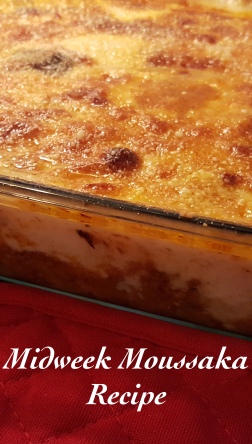When I was growing up, my dad was in charge of dinner once in a while, and his go-to was pesto. I have a special place on my palate for this style of pesto, and when I have a bit of fresh basil to use, I make a batch of pesto to keep in the fridge. I use the pesto in my spag bol, or as a spread on a cold chicken sandwich, but most especially for the fastest midweek dinner.
The pesto I make has walnuts, which may turn off a few due to taste or allergy, but you can substitute a nice hard, Italian cheese for the nuts if you prefer. Pine nuts are more traditional, but I find them expensive and less versatile than the walnuts, which also find their way into baked goods in my house. You can also add more olive oil than the recipe calls for to taste, but I usually add olive oil to the dish I’m using the pesto to flavour, so I use just enough to blend and preserve.
If you don’t fancy making the pesto from scratch, you can always tear in basil leaves and crush fresh garlic for the pasta recipe, and it’s still flavorful and quick. My kids aren’t the biggest fans of this pasta if it isn’t angel hair and the garlic is overpowering, but they never notice when it’s in the spag bol! This dish takes all of 15 minutes, the longest step really is waiting for the water to boil. You can even make the pesto in the food processor while you wait for the water and then pasta. So quick, and so tasty!
You’ll need:
Pesto (food processor to a paste)
- 1 cup fresh basil leaves, rinsed
- 2 teaspoons (or two cloves) fresh peeled garlic
- ½ cup olive oil
- ¼ cup walnut halves or pieces
- 1 teaspoon salt
Pasta
- Angel Hair pasta (or spaghetti) to serve four (one handful usually does the trick)
- ½ cup chopped onion (I use frozen)
- 1 teaspoon olive oil
- 1 cup sweet peas (again, frozen)
- ½ cup rough chopped walnuts
- 1-2 tablespoons pesto from above batch (or a handful of basil leaves and a bit of garlic)
- ½ cup shredded Parmesan or preferred hard cheese
- Salt and pepper to taste
The method:
Using a food processor, blend the basil leaves, garlic cloves and olive oil until smooth.
Add the walnuts and salt, and any more olive oil to keep the mixture smooth up to an additional tablespoon. The pesto paste should not clump up, but remain semi-liquid.

Using a medium saucepan, bring 6+ cups of water to a boil for the pasta.
Break the pasta in half and add to the boiling water. Add salt and oil if you choose, but I usually don’t bother.
While the pasta cooks, scrape the pesto into an airtight container; this will keep in the fridge for a couple of weeks!
Drain the pasta in the sink and return the pan to the cook top with a medium heat.
Add the onions, peas and oil and thaw/lightly fry the onions and peas.
Add the pesto you’ve created and the additional walnut pieces and stir into the onions and peas. This allows the garlic to fry off lightly before adding the pasta.
Return the pasta to the pan and toss lightly. You can also pour the pasta and sauce into a large serving bowl for tossing, it may provide more space for evenly coating the pesto.
Remove from the heat and either in the pot or bowl, add the cheese and toss again.
Salt and pepper to taste before serving. Enjoy!

















































 Pour the meat mixture over the aubergine and add another layer of parmesan sprinkle before pouring the beaten egg over the top.
Pour the meat mixture over the aubergine and add another layer of parmesan sprinkle before pouring the beaten egg over the top. 